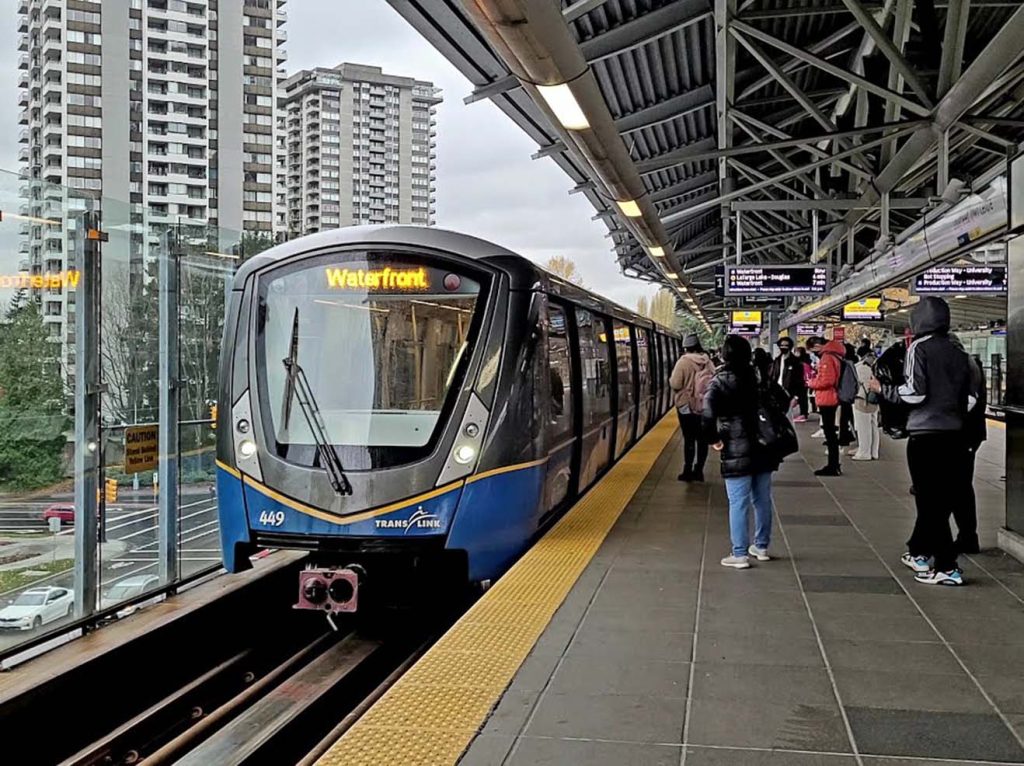Eco-Friendly and Affordable Guide to Public Transportation in Vancouver
Vancouver is renowned for its beautiful landscapes, vibrant culture, and progressive attitude towards sustainability. One of the city’s most impressive features is its commitment to reducing its environmental impact, especially when it comes to transportation. Whether you’re a local or a visitor, Vancouver’s public transportation system is not only an affordable and eco-friendly way to get around, but it also offers a seamless travel experience across this stunning city. In this guide, I’ll walk you through all the ways you can use Vancouver’s public transportation system, highlighting its affordability, eco-conscious initiatives, and tips to help you get around efficiently.
Vancouver’s Public Transportation System
Vancouver’s public transportation network is managed by TransLink, which oversees buses, the SkyTrain, SeaBus, and the West Coast Express commuter rail. These interconnected modes of transit cover the city and beyond, making it easy to get almost anywhere in Greater Vancouver without the need for a car. Whether you’re commuting to work, heading to the airport, or exploring the city’s diverse neighborhoods, Vancouver’s public transport is efficient, reliable, and increasingly eco-friendly.
Why Public Transportation is the Eco-Friendly Choice in Vancouver
Vancouver’s public transportation is a cornerstone of the city’s sustainability efforts. The entire public transit network is designed to reduce the number of private vehicles on the road, lower greenhouse gas emissions, and encourage greener ways to travel. The key environmental advantages include:
- Reduced Carbon Footprint: Using public transportation reduces the number of cars on the road, which in turn reduces traffic congestion and lowers greenhouse gas emissions. According to TransLink, one bus removes 40 cars from the road.
- Electric Transit Options: The SkyTrain system and SeaBus are powered by electricity, and while some buses are still powered by diesel, many are transitioning to electric or hybrid models to reduce emissions.
- Integrated Cycling Infrastructure: Vancouver has a strong cycling culture, and many public transportation hubs are designed to accommodate cyclists, making it easy to combine biking and transit.
- Sustainable Planning: Vancouver has implemented zoning and urban planning that promotes public transit usage, with dense neighborhoods that are accessible via multiple public transport routes.
SkyTrain: The Heart of Vancouver’s Public Transit System
The SkyTrain is one of the most iconic and efficient elements of Vancouver’s public transportation network. As one of the longest fully automated transit systems in the world, it is known for its punctuality and eco-friendly design.

SkyTrain Lines:
- Expo Line: This line connects downtown Vancouver to Surrey, passing through key neighborhoods like Yaletown, Burnaby, and New Westminster. It is particularly useful for getting to Vancouver’s major attractions like Science World, BC Place, and the Vancouver Convention Centre.
- Millennium Line: This line connects the VCC–Clark Station in Vancouver to the end of the line in Coquitlam, passing through important areas such as Commercial Drive and Brentwood.
- Canada Line: A newer addition, the Canada Line connects downtown Vancouver to the Vancouver International Airport (YVR) and Richmond, making it particularly convenient for tourists and travelers. It is a direct and fast route to get from downtown to the airport.
Eco-Friendliness of the SkyTrain:
The SkyTrain runs on electricity, making it one of the most sustainable modes of public transport in Vancouver. Unlike traditional diesel-powered trains, the SkyTrain is fully automated and operates without the need for a driver. The system’s efficient design allows for high-capacity trains, reducing congestion and making it easier to get around.
How to Use the SkyTrain:
- Tickets and Fare: To ride the SkyTrain, you will need to tap your Compass Card, a smart card that works across all public transit systems in Vancouver. You can purchase a Compass Card at any SkyTrain station or load it online. You can also pay for a single ride with a contactless payment method such as Apple Pay, Google Pay, or a credit card.
- Cost: Fares vary depending on the number of zones you travel through. Vancouver’s fare zones are divided into three categories: 1 zone, 2 zones, and 3 zones. For example, traveling within one zone costs approximately CAD $3.05, while traveling across three zones can cost around CAD $5.90.
Buses: Extensive Coverage and Flexibility
Vancouver’s bus network is vast, covering the entire city and surrounding areas. There are over 200 bus routes that operate throughout Greater Vancouver, making buses a convenient option for getting to places that aren’t directly accessible by SkyTrain.

Types of Buses:
- Regular City Buses: These are the most common buses in Vancouver, covering routes across neighborhoods and suburbs. They are highly frequent, especially during peak hours.
- Express Buses: These buses operate on routes with fewer stops, making them faster than regular city buses.
- Night Buses: TransLink also offers night bus services that operate after the SkyTrain and regular buses have stopped running. These buses serve key routes and run until early morning.
Eco-Friendliness of Buses:
Vancouver’s bus fleet includes both hybrid and fully electric buses, which help reduce emissions. The city has committed to transitioning to a zero-emission bus fleet by 2040, aligning with its goal to be carbon-neutral by 2050.
How to Use the Bus:
- Ticketing: You can pay for your bus ride with a Compass Card, or if you don’t have one, you can pay with cash (though exact change is required).
- Cost: A one-zone bus fare is CAD $3.05, similar to the SkyTrain fare for a one-zone trip. The cost increases depending on the number of zones you travel through.
SeaBus: A Scenic, Eco-Friendly Commute Across the Water
The SeaBus is a passenger ferry service that connects Vancouver’s Waterfront Station to the North Shore, offering a scenic and sustainable way to travel between the two sides of the city.

What Makes SeaBus Eco-Friendly:
The SeaBus runs on electricity and provides a quieter, more environmentally friendly alternative to traditional ferries. The ferry service operates frequently and efficiently, ensuring minimal wait times for passengers.
How to Use the SeaBus:
- Departure Points: The SeaBus departs from Waterfront Station in downtown Vancouver and crosses the Burrard Inlet to Lonsdale Quay in North Vancouver.
- Ticketing: You can use the Compass Card for a seamless transfer between the SeaBus and other modes of public transport.
- Cost: The cost of a one-zone fare on the SeaBus is CAD $3.05, just like the SkyTrain or bus.
West Coast Express: A Comfortable Ride for Commuters
For those traveling from the suburbs of Greater Vancouver to downtown, the West Coast Express (WCE) provides a more comfortable commuter rail experience. This service connects downtown Vancouver with communities to the east, such as Burnaby, Port Coquitlam, and Mission.
Eco-Friendly Features:
The West Coast Express is an electric rail service that offers an eco-conscious alternative to driving. Its spacious carriages allow for a more comfortable commute, and the service is well-suited for daily travelers looking to reduce their carbon footprint.
How to Use the West Coast Express:
- Ticketing: Tickets for the West Coast Express can be purchased at stations, online, or through the TransLink app.
- Cost: Fares for the West Coast Express depend on the station you are departing from, but prices typically range from CAD $5.25 to CAD $10.75 for a one-way trip.
Cycling: Combine Your Commute with a Ride
Vancouver is known for being one of the most bike-friendly cities in North America, with an extensive network of bike lanes and cycling routes. Many of Vancouver’s transit stations are equipped with bike racks, and bike-sharing programs are available for those who prefer cycling over other forms of public transportation.
Eco-Friendly Cycling Tips:
- Bike-Sharing Programs: The Mobi by Shaw Go bike-sharing program allows users to rent bikes for short trips across the city. This is an affordable and sustainable option for both locals and tourists.
- Cycling Infrastructure: Vancouver has dedicated bike lanes throughout the city, making it safe and easy to navigate by bike. Many public transit stations are also equipped with bike racks or bike lockers.
TransLink’s Sustainability Initiatives
TransLink’s commitment to sustainability goes beyond just providing eco-friendly transportation options. The company has taken various steps to improve its environmental footprint, including:
- Transitioning to an electric and hybrid bus fleet
- Installing solar panels on bus terminals
- Promoting the use of eco-friendly fare payment systems, such as Compass Cards
- Implementing green building standards for transit stations
How to Save Money on Vancouver Public Transport
- Compass Card: Purchase a Compass Card to save on single-ride fares and avoid paying cash. You can load funds onto the card online or at any station.
- DayPass: If you’re planning to travel extensively throughout the day, consider getting a DayPass. This pass allows unlimited travel across all modes of public transit within the selected zones, saving you money on multiple trips.
- Monthly Pass: For frequent travelers, a monthly pass provides unlimited access to public transport within the selected zones for a set fee.
- Discounts for Seniors and Students: Seniors and students can enjoy discounted fares with a valid ID.
A Greener and Smarter Way to Explore Vancouver
Vancouver’s public transportation system is a model of efficiency, sustainability, and affordability. Whether you’re commuting for work, exploring the city, or heading to the airport, you’ll find that using public transit is not only eco-friendly but also a smart choice for getting around. With options like the SkyTrain, buses, SeaBus, and West
Coast Express, it’s easier than ever to reduce your carbon footprint while enjoying all that this beautiful city has to offer.





